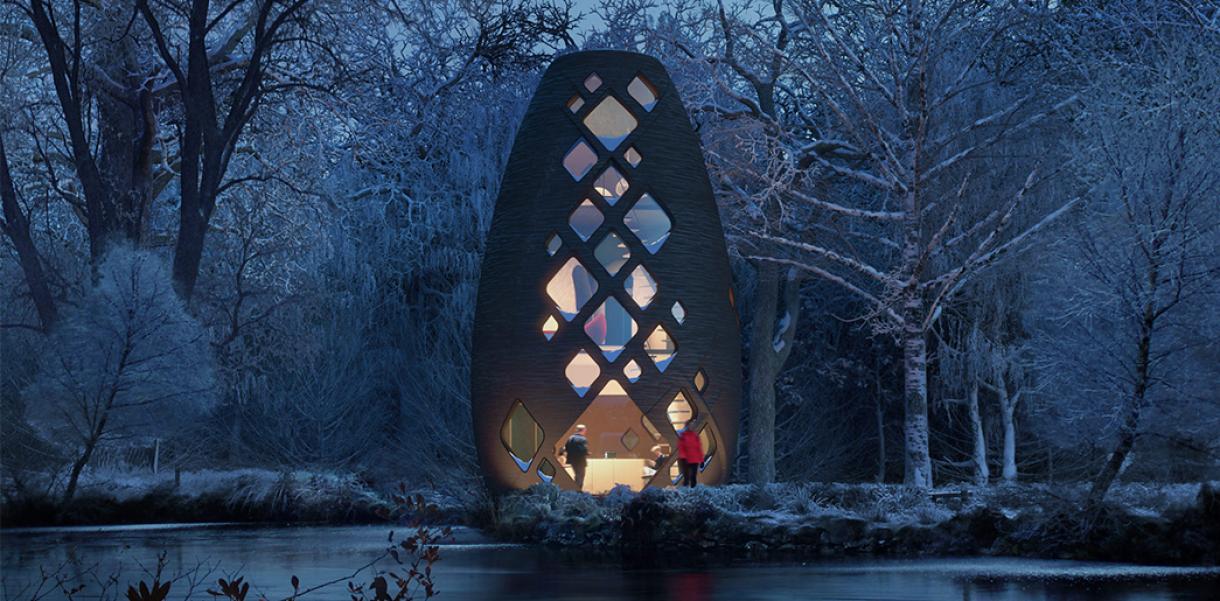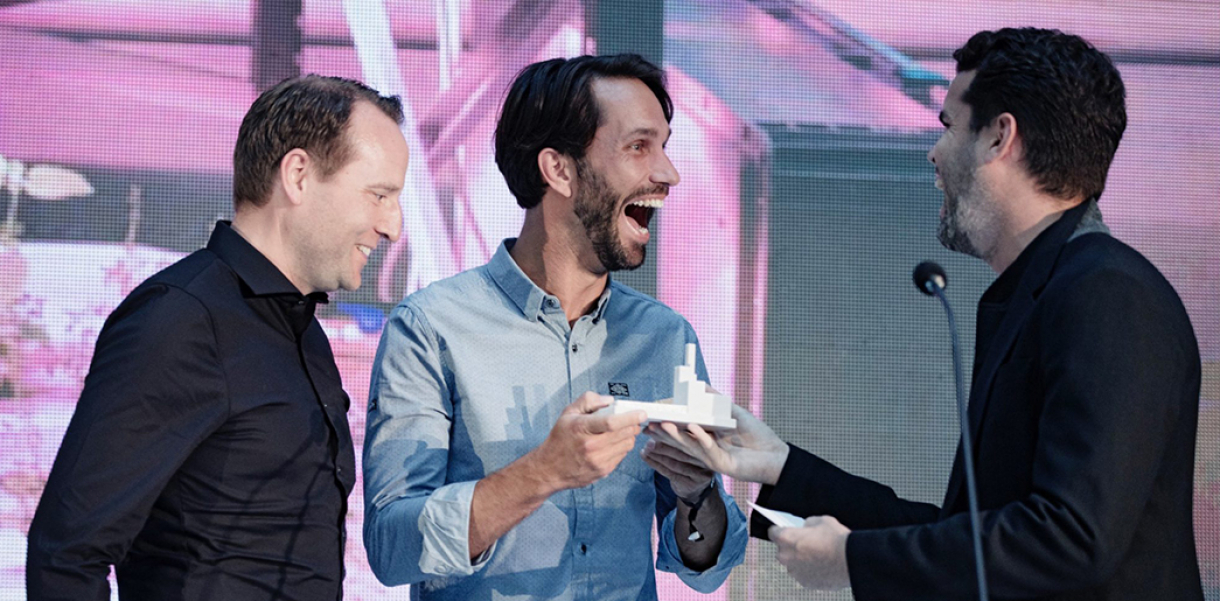Will building on Mars improve how we build on Earth? If you ask AI SpaceFactory, the answer is a resounding yes. Their martian home took out an Index Award last year in the home category for their bold vision of future living. The aptly-named design Marsha isn't only masterfully created, but an intriguing object for discussing and envisioning home 2.0.
Since the win, AI SpaceFactory has spent their time building Marsha's earthy counterpart: Tera. The purpose of this more grounded project, located in Upstate New York, was to "apply the martian home's design and technology to construct a terrestrial analogue habitat," CEO and Founder of AI Spacefactory David Malott told us.
"AI SpaceFactory makes it even more apparent that their extra-terrestrial design is inspiring a new generation of building on Earth."
Like Marsha, Tera is 3D-printed from renewable and recycled materials. The egg-shaped structure also utilises the biopolymer basalt composite, which, according to NASA, is 50% stronger and more durable than concrete. Inside, the design aims for "luxurious simplicity" and has the aesthetic of a tree-house combined with the freedom of no-defined rooms.
With the realisation of Tera, AI SpaceFactory makes it even more apparent that their extra-terrestrial design is inspiring a new generation of building on Earth. Instead of building with resources that are energy-intensive to make, like concrete and steel, we could build with durable, sustainable materials that are more readily available.
“There will be nothing more sustainable than going to a piece of land and just building with the material you find there."
"The closer we get to just going out to a piece of land, collecting the rocks and dirt, and using a minimal amount of plastic to build — that's going to be transformative," explains Malott. "There will be nothing more sustainable than going to a piece of land and just building with the material you find there."
Guests will be able to experience Tera when it opens to the public for nightly stays. To date, the progress has been closely covered by The New York Times and CNBC, among others.
At the headquarters of AI SpaceFactory in New York, the Index Award prize money has helped secure further research and development of Marsha. Although, in theory, the design is ready for the red planet, it's hard to predict when trials can be implemented, according to Malott.
While it may be a long road ahead before we see Marsha on its' home planet, we can't wait to see how the technology unfolds here on Earth.
Marsha from The Index Project on Vimeo.
-
Image: Plomp & AI SpaceFactory




